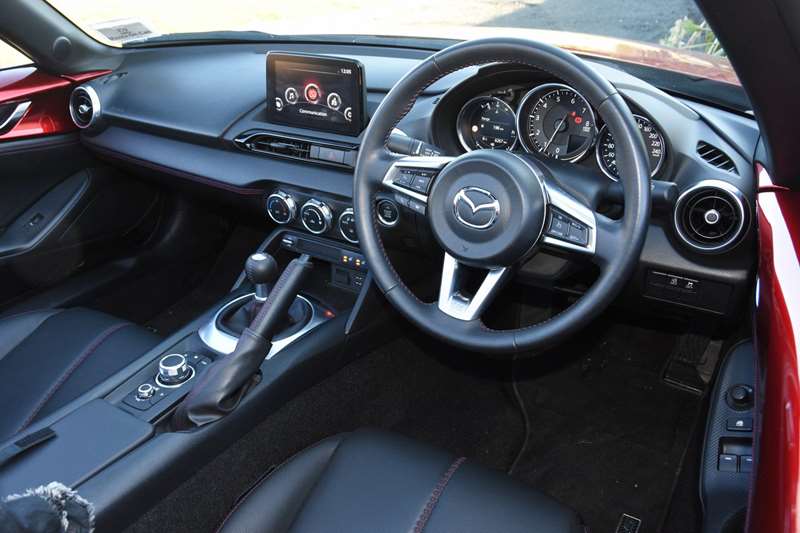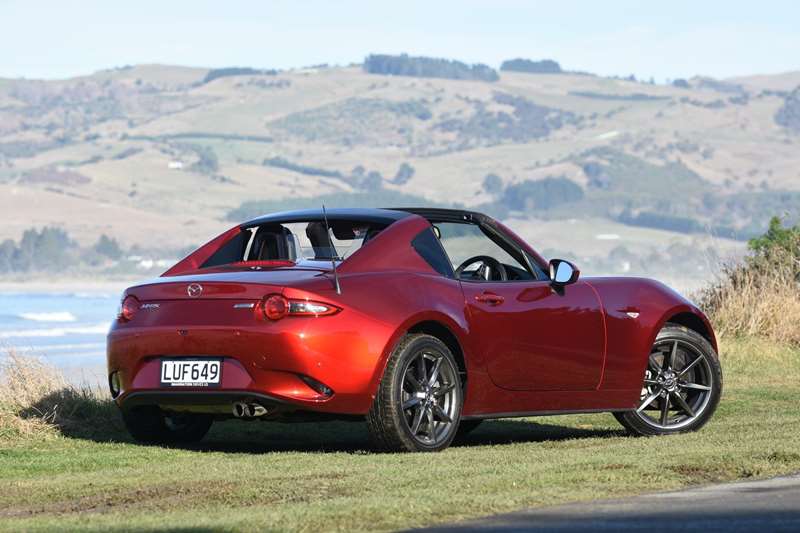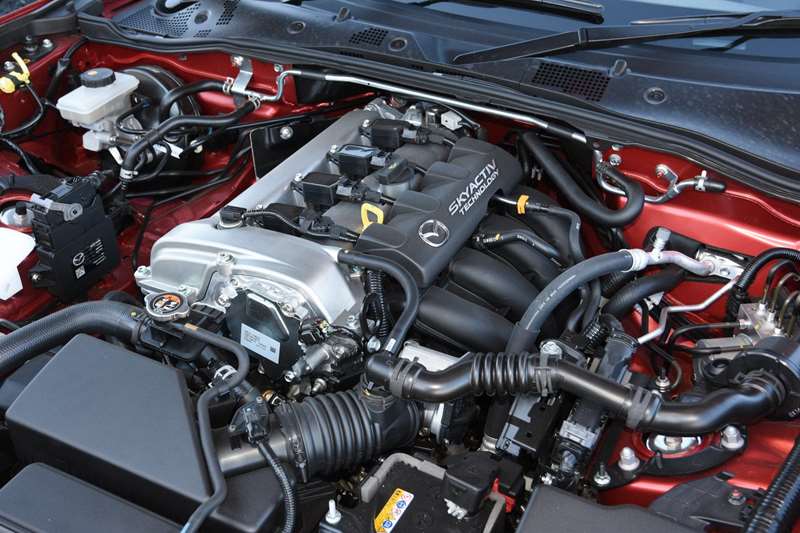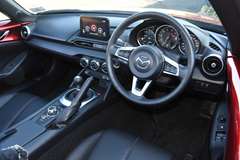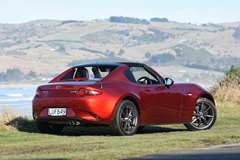Driving a Mazda MX-5 at least once a year is good for one’s motoring soul, reckons David Thomson. He manages that feat for 2019 behind the wheel of the latest RF version of the quintessential sports machine.
What’s new?
At first glance, little has changed from the MX-5 RF that Drivesouth sampled on snow and ice at the Southern Hemisphere Proving Ground on the Pisa Range last winter: same shape, same provision of 2.0-litre power under the bonnet, and even the same Soul Red paint scheme.
But Mazda’s application of Japanese Kaizen (continuous improvement) to this latest version of the MX-5 means that what you see isn’t necessarily what you get.
The headline change this time around is under the bonnet, where the RF’s 2.0-litre SkyActiv motor has been revamped to deliver more power (135kW rather than 118kW) and more torque (205Nm rather than 200Nm at 4600rpm), the former produced higher in the rev range than before and the latter lower. The engine’s red-line has also been lifted from 7000 to 7500rpm.
Banish any thought that these gains have been achieved simply by tweaking the engine’s electronic management systems. This revised motor features new and lighter conrods and pistons and low-friction piston rings. Its intakes and throttle body have been altered, exhaust ports enlarged and a new flywheel fitted to improve engine response. Throttle response has also been altered.
There are also detail changes in the cabin: for the first time in the MX-5’s 30-year history, there’s a steering column that adjusts for reach as well as angle; the sun visors have been enlarged, and the list of safety features extended.
Unlike the roadster version of the MX-5, which also comes with a 1.5-litre engine, the coupe-like RF version is only available with 2.0-litre power. That engine is mated to either a six-speed manual or auto. The manual, as tested, carries a $53,745 price tag.
What’s it like to look at?
Aesthetically, the MX-5 roadster is the honey. The RF (short for Retractable Fastback) trades some of its sibling’s delicate charm for a more heavily haunched look that is purposeful rather than pretty. The paybacks for the RF include a more cosseting cabin and the convenience of a power-operated folding metal hard top rather than a manual-folding soft top.
What’s it like inside?
The MX-5’s snug two-seater cabin and low-slung driving position is sports-car perfect now that reach-adjustment for the steering makes it even easier to find a driving position that suits.
The exterior colour carries into the cabin on the top door panels, and there’s also red contrast stitching on the charcoal artificial leather seat trims, gearshift, sports steering wheel and trim inserts.
Key controls and instruments are Mazda standard, as is the centre-mounted display screen.
Roof up, the RF feels like a coupe, while roof-down motoring has occupants better isolated from the elements than in the roadster, albeit with quite a lot of wind noise generated by the roof pillars at highway speeds.
Additional to some in-cabin storage, the boot provides a limited 127-litre capacity, making the RF a travel-light proposition for driver and passenger alike.
What comes as standard?
Heated seats and a powerful climate-control system are must-have items for open-top motoring in winter and the MX-5 RF obliges. A reversing camera, rear parking sensors, rear cross-traffic alert and the addition of smart reverse braking (to apply the brakes if the car detects a collision risk when backing) are handy on a vehicle with quite poor rear visibility.
The reverse braking — called Smart City Brake System (Reverse) (SCBS R) — is part of a wider i-ACTIVSENSE safety suite that includes Advanced Smart City Brake Support — Forward (ASCBS-F), lane-departure warning, driver attention alert, blind spot monitoring and traffic sign recognition.
Other features in the standard bill are adaptive LED headlights, LED running lights, keyless entry, satellite navigation and a nine-speaker BOSE sound system.
What’s it like to drive?
Back in 1989, the original MX-5 outpointed many of its more powerful and celebrated contemporaries to win the prestigious best-handling car of the year award from British automotive magazine Autocar. Delicate, well balanced and utterly engaging rear-drive handling has remained an MX-5 hallmark since and only once — with a special-edition turbocharged model — has Mazda come close
to dropping the ball in this regard.
Settling in behind the wheel of a manual transmission test vehicle for the first time this year, I found it didn’t take long to confirm that this latest round of tweaks further enhance rather than detract from the MX-5’s core appeal.
Rifling through some of the six-speed gearbox’s lower ratios, I did wind the eager, free-revving motor to its new red-line a couple of times on test, simply because I could. However, it’s neither the provision of an extra 500rpm at the top end, nor that boost in peak power, that makes the strongest mechanical impression when comparing this MX-5 version with its immediate predecessor.
Rather, it’s the extra breadth of torque that makes the most telling mark: breadth that increases low-down flexibility when loafing, as well as adding appreciably to initial responsiveness and mid-range punch when pressing on.
Handling remains first-rate and is delivered without too much grip or too little ride compliance. The ability of the MX-5 to captivate its driver is further promoted by steering that is wonderfully accurate and communicative.
Verdict
Subtly improved by this latest update, the MX-5 RF remains a car that continues to be defined by the way it corners rather than how quickly it accelerates between them. Terms such as nimble, poised and communicative continue to serve as accurate descriptors for a beautifully balanced machine that is, in all respects, a dynamic delight.

